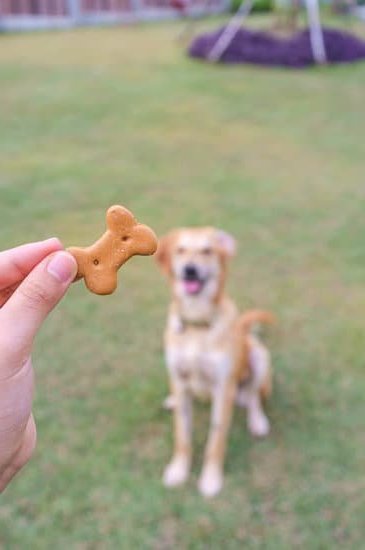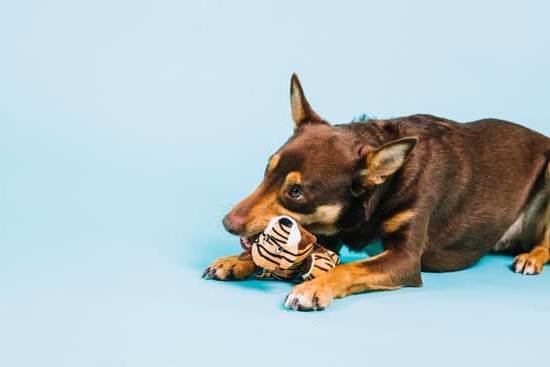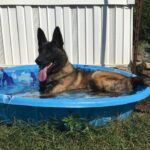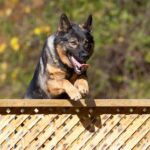Potty training an adult dog can be a challenging and frustrating task, but with the right approach and techniques, it is possible to achieve success quickly. In this article, we will explore various strategies and methods to potty train adult dogs fast.
Potty training is crucial for adult dogs for several reasons. First and foremost, it ensures a clean and hygienic environment for both the dog and its owner. It eliminates the need for constant cleaning up after accidents, which can be time-consuming and unpleasant. Additionally, potty training helps establish good habits and routines, promoting overall well-being and behavior in adult dogs.
However, potty training adult dogs comes with its own set of challenges. Unlike puppies who are more receptive to learning new habits, adult dogs may have already developed ingrained behaviors that can be difficult to modify. They may also have previous training or behavioral issues that need to be addressed alongside potty training. These factors require patience, consistency, and understanding in order to effectively train an adult dog to use appropriate potty areas.
In the following sections of this article, we will delve into assessing your adult dog’s potty training needs, developing a consistent schedule, choosing the right training method, utilizing positive reinforcement techniques, maintaining patience and consistency throughout the process, addressing common setbacks and issues that may arise during potty training, as well as special considerations for rescues or dogs with previous trauma.
By following these guidelines and implementing effective strategies tailored to your individual dog’s needs, you will be on your way to successfully potty training your adult dog in no time.
Assessing the Situation
When it comes to potty training an adult dog, understanding their specific needs and behaviors is crucial for success. This section will guide you in assessing your dog’s potty training history, behavioral issues, and any medical conditions that may impact their progress. By taking the time to evaluate these factors, you can tailor your approach to meet your dog’s individual needs.
One important aspect of assessing the situation is evaluating your dog’s potty training history. Determine whether they have received any previous potty training and how effective it was. This information can help you identify any patterns or habits that may need to be addressed. Additionally, if your dog has never received formal potty training, it’s essential to understand that they may require more time and patience.
In addition to reviewing their training history, it is crucial to assess any behavioral issues that may be affecting their potty training progress. Some adult dogs may have developed bad habits or aversions related to certain potty cues or signals. By identifying these issues, you can take steps to address them and find alternative methods for successful potty training.
Another key factor in assessing the situation is determining whether there are any underlying medical conditions impacting your dog’s ability to be fully trained. Dogs with urinary tract infections, gastrointestinal issues, or other health problems may struggle with controlling their bladder or bowel movements. If you suspect a medical issue, consult with a veterinarian for appropriate diagnosis and treatment options.
Overall, by thoroughly assessing your adult dog’s potty training needs through evaluating their history, addressing behavior issues, and considering potential medical conditions, you can tailor your approach accordingly and increase the chances of success in their potty training journey.
| Assessment Factors | Considerations |
|---|---|
| Potty Training History | Review any previous training and identify patterns |
| Behavioral Issues | Identify aversions or bad habits related to potty cues |
| Medical Conditions | Determine if underlying health issues are impacting training progress |
Developing a Schedule
Establishing a consistent potty routine is crucial when potty training an adult dog. By creating a fixed schedule, you can help your dog understand when and where they should eliminate, making the training process more efficient and effective. Here are some tips for developing a schedule for your adult dog:
- Set regular potty breaks: Determine the frequency of potty breaks based on your dog’s age, activity level, and bladder capacity. On average, adult dogs need to go outside to eliminate every 4-6 hours. However, this may vary depending on factors such as size and breed. Take your dog out for potty breaks at the same times each day to establish a routine.
- Identify the appropriate times: Observe your dog’s behavior after meals, naps, playtime, or waking up from sleep to identify when they are most likely to need a potty break. Dogs often have a predictable pattern of needing to eliminate after these activities.
- Avoid disruptions in the schedule: It is essential to stick to the established schedule as much as possible. If there are unavoidable disruptions such as work or other commitments, consider hiring a dog walker or asking a trusted neighbor or friend to take your dog out during those times.
Consistency is key when it comes to establishing a potty routine for your adult dog. By following a consistent schedule, you will reinforce their understanding of when and where they should eliminate.
Aside from setting a strict schedule, it’s also important to be patient with your adult dog during the training process. Some dogs may take longer than others to grasp the concept of potty training or may have previous experiences that make them more challenging to train. Regardless of any setbacks or challenges you encounter during potty training, consistency and patience will help you achieve success.
Remember, accidents are to be expected during the potty training process. If your dog has an accident indoors, it’s crucial to remain calm and avoid scolding or punishing them. Instead, redirect them to the appropriate potty area and reinforce good behavior with praise and rewards when they eliminate in the right place.
Choosing a Training Method
Choosing the right training method is crucial when potty training an adult dog. There are several methods available, such as crate training, paper training, and outdoor training. Each method has its own advantages and disadvantages, so it’s important to consider various factors before making a decision.
One popular method for potty training adult dogs is crate training. This involves using a crate or a small enclosed space where the dog can comfortably rest and sleep. Dogs have a natural instinct to keep their sleeping area clean, so they are less likely to eliminate inside the crate. It’s important to choose a crate that is appropriate for your dog’s size and provide sufficient opportunities for the dog to relieve themselves outside of the crate.
Paper training is another option for potty training adult dogs, especially those who are not able to go outside frequently due to health issues or living in an apartment without immediate access to outdoors. This method involves designating a specific area with newspaper or potty pads where the dog can eliminate. Over time, you can gradually move the newspaper closer to the desired outdoor elimination area until the dog no longer needs it.
Outdoor training is often recommended for adult dogs who have already had some level of potty training but need reinforcement and guidance. It involves taking the dog outside at regular intervals and providing positive reinforcement when they eliminate in the desired area. Consistency and patience are key with this method as you need to establish a routine and reinforce good behavior consistently.
When choosing a potty training method for your adult dog, make sure to assess your own lifestyle, schedule, and preferences along with considering your dog’s needs and abilities. Some dogs may respond better to certain methods based on their age, breed, temperament, and previous potty training history. It may be helpful to consult with a professional trainer or veterinarian for guidance on choosing the most suitable approach for your dog.
| Training Method | Advantages | Disadvantages |
|---|---|---|
| Crate Training | – Uses a dog’s natural instinct to keep their sleeping area clean
| – May require additional time for the dog to get used to being in a crate
|
| Paper Training | – Suitable for dogs who cannot access outdoor elimination areas easily
| – Can be messy and may result in inappropriate elimination elsewhere indoors
|
| Outdoor Training | – Reinforces natural instinct of eliminating outdoors
| – Depends on suitable weather conditions for outdoor potty breaks
|
Positive Reinforcement
Positive reinforcement plays a critical role in potty training an adult dog. By using rewards and encouragement, you can reinforce desired behavior and motivate your dog to consistently use the appropriate potty area. This section will explore why positive reinforcement is crucial, the importance of using treats, praise, and affirmations, as well as tips for providing effective rewards and maintaining consistency.
Why positive reinforcement is crucial in adult dog potty training
Positive reinforcement involves rewarding your adult dog for exhibiting the desired behavior of eliminating in the designated potty area. This method focuses on creating an association between good behavior and rewards, which encourages your dog to repeat that behavior. Positive reinforcement helps to establish a positive and enjoyable experience during the potty training process, making it more effective and efficient.
By using positive reinforcement techniques such as treats, praise, or verbal affirmations, your dog learns that they receive something pleasurable when they eliminate in the appropriate place. This strengthens their understanding of what is expected from them and reinforces the connection between using the designated area for elimination and receiving positive outcomes.
Importance of using treats, praise, and affirmations to reinforce desired behavior
Treats are often one of the most effective rewards when it comes to potty training an adult dog. Choose small-sized treats that can be easily consumed without interrupting the training process. Whenever your dog successfully uses the appropriate potty area, give them a treat immediately after they finish eliminating. This immediate reward helps them associate going to the bathroom in the right place with receiving a treat.
In addition to treats, offering praise and verbal affirmations can also be highly effective forms of positive reinforcement. Use an upbeat tone of voice to express excitement or satisfaction when your dog successfully eliminates where they are supposed to. You can say phrases like “good job,” “well done,” or any other words that convey positivity.
Consistency is key when using rewards and encouragement as positive reinforcement. Ensure that you provide rewards and praise consistently each time your dog uses the appropriate potty area. This helps reinforce the desired behavior and strengthens the connection between eliminating in the right place and receiving positive reinforcement.
Tips for providing effective rewards and maintaining consistency
To make your rewards more enticing, consider using high-value treats that your dog particularly enjoys. These could be small pieces of cooked chicken, cheese, or commercial dog treats with a strong aroma and taste. By using high-value treats during potty training, you are more likely to capture your dog’s attention and motivate them to repeat the desired behavior.
It is essential to reward your adult dog immediately after they have finished eliminating in the appropriate area. Delaying the reward can cause confusion for your dog, making it more challenging for them to understand what behavior they are being rewarded for. Keep treats or a clicker nearby so that you can promptly respond when your dog eliminates where they should.
Consistency is crucial throughout the entire potty training process. Make sure everyone involved in caring for your adult dog understands and follows the same rewarding system. Establish clear guidelines on how rewards will be given and ensure that everybody consistently provides positive reinforcement when your dog exhibits the desired behavior.
By utilizing positive reinforcement techniques such as treats, praise, and affirmations during adult dog potty training, you can create a positive association between desired behavior and rewards. This encourages your dog to continue using the designated potty area consistently. Remember to use high-value treats, provide immediate rewards, maintain consistency across all caregivers, and monitor progress closely to ensure success in potty training your adult dog.
Consistency and Patience
Consistency and patience play a crucial role in successfully potty training an adult dog. While it can be frustrating at times, it’s important to remember that setbacks are part of the process. By maintaining consistency and patience, you can overcome challenges and achieve success in potty training your adult dog.
One key aspect of consistency is establishing a routine. Dogs thrive on structure and predictability, so having a fixed potty schedule will help them understand when and where they should eliminate. Create a consistent routine by taking your dog out to their designated potty area at the same times each day, such as after meals, upon waking up, or before bedtime. This regularity will reinforce the connection between the cue to eliminate and the appropriate spot for doing so.
It’s important to note that setbacks may occur during the potty training process. Accidents are bound to happen, especially in the early stages of training or if your dog has any underlying medical conditions. Instead of becoming discouraged or angry, remain patient and address accidents calmly.
Clean up any messes using an enzymatic cleaner specifically designed for pet stains to eliminate any lingering odors that might attract your dog back to that spot. Reinforce positive behavior by rewarding your dog when they eliminate in the designated area, even if there have been setbacks along the way.
Remember that each dog is unique and may require different amounts of time to fully grasp potty training concepts. Stay patient even if progress seems slow or if your adult dog exhibits resistance or stubbornness during the process. Consistency combined with positive reinforcement techniques will help create a positive association with potty training for your furry friend. Remain persistent in implementing the established routine, as this will increase the likelihood of success over time.
By staying consistent and patient throughout the potty training journey with your adult dog, you can overcome setbacks and achieve success. Understanding that accidents and challenges may occur, but remaining positive and determined, will ultimately lead to a well-potty trained adult dog. Keep in mind that building a strong bond with your dog during this process is just as important as the end result. So, stay committed, be patient, and enjoy the journey towards success with your beloved pet.
Problem-Solving
Tackling accidents and how to handle them effectively
One of the most frustrating aspects of potty training an adult dog is dealing with accidents. Even with the best efforts, accidents can still happen during the training process. It’s important to approach these accidents with patience and understanding, without punishing or scolding your dog. Instead, focus on correcting the behavior in a positive way.
When an accident occurs, it’s crucial to clean up the mess thoroughly and remove any odor that may attract your dog back to that spot. Use an enzymatic cleaner specifically designed for pet stains to eliminate any traces of urine or feces. Additionally, make sure to avoid using ammonia-based cleaners as they can actually encourage dogs to eliminate in those areas.
To prevent future accidents, it’s helpful to keep a close eye on your dog and look for signs that they need to go outside. Common signs include sniffing around or circling before squatting down. When you notice these behaviors, quickly redirect your dog outdoors or to their designated potty area. Consistency and prompt action are key in preventing accidents.
Dealing with resistance and stubbornness in adult dogs
Some adult dogs may display resistance or stubbornness when it comes to potty training. This can be frustrating for owners who are eager for quick results. If your dog is exhibiting this behavior, it’s important not to lose patience and remain calm throughout the process.
Firstly, assess if there might be any underlying reasons for their resistance such as anxiety, fear, or discomfort. Addressing these underlying issues through positive reinforcement techniques like desensitization and counterconditioning could significantly improve their progress.
Another strategy is to make potty time more appealing for your dog by offering treats or rewards immediately after they eliminate in the appropriate spot. Positive reinforcement helps create positive associations with going potty outside which will motivate them towards better behavior.
Lastly, consult a professional dog trainer or behaviorist if you’re facing significant challenges with potty training. They can observe your training techniques, provide personalized advice, and guide you through effective strategies to overcome resistance or stubbornness.
Solutions for marking or territorial behaviors during potty training
Marking or territorial behaviors can be a common issue during adult dog potty training, especially for male dogs. This behavior involves them urinating on vertical surfaces to communicate their presence or mark their territory. If your dog is engaging in marking behaviors during the potty training process, there are steps you can take to address it.
Firstly, ensure that your dog is fully neutered or spayed if they haven’t been already. This can reduce the hormonal drive behind marking behaviors. Additionally, keep a watchful eye on your dog and interrupt any attempts to mark indoors by redirecting them outside immediately.
Another strategy is to create a designated potty area in your yard specifically for marking purposes. This helps channel their marking behavior in an appropriate way rather than inside the house. Use positive reinforcement techniques like treats and praise when your dog successfully marks in this designated area.
Consistency and patience are crucial when addressing marking behaviors as it may take time for dogs to unlearn this habit. Be vigilant in monitoring their behavior and continue rewarding them for eliminating in the appropriate spots outdoors. With time and persistence, most dogs will eventually abandon their need to mark indoors during the potty training process.
Special Considerations
Potty training adult rescue dogs or dogs with previous trauma can present unique challenges. These dogs may have had negative experiences in the past that can make potty training more difficult and require additional patience and understanding. It is important to create a safe and comfortable environment for these dogs to help them overcome their fears and build trust.
When potty training adult rescue dogs or dogs with previous trauma, it is crucial to take things slow and allow them to adjust at their own pace. These dogs may be apprehensive or fearful of new experiences, so it is important to create a calm and positive atmosphere during potty training sessions. Avoid rushing or forcing the dog into any uncomfortable situations.
One strategy for potty training adult rescue dogs or dogs with previous trauma is to use positive reinforcement consistently. Reward desired behaviors such as going to the designated potty area or signaling when they need to go outside. Use treats, praise, and affection to reinforce these behaviors and help the dog associate going potty in the right place with positive experiences.
In addition, providing a consistent routine and schedule can be beneficial for these dogs. Establish set times for potty breaks and stick to them as much as possible. This will help the dog develop a sense of predictability and security in their new environment.
It is also important to understand that setbacks may occur during the potty training process with adult rescue dogs or those with previous trauma. Be patient and understanding if accidents happen or if progress seems slow. Seek guidance from professionals such as trainers or veterinarians if needed, as they can provide additional insight and support.
By taking into consideration the special needs of adult rescue dogs or those with previous trauma, you can make their potty training experience more successful. With time, patience, consistency, and understanding, these dogs can overcome their past experiences and learn proper potty habits in their new loving homes.
Conclusion
In conclusion, potty training an adult dog can be a challenging but achievable task with the right approach and mindset. Throughout this article, we have discussed the importance of potty training for adult dogs and the challenges that can arise during the process.
By assessing your dog’s needs, developing a consistent schedule, choosing a training method that works for you and your dog, using positive reinforcement, maintaining patience and consistency, addressing common issues, and considering special circumstances such as rescue dogs or those with previous trauma, you can achieve success in potty training your adult dog.
It is crucial to remember that potty training takes time and effort. Consistency and patience are key factors in achieving desired results. Setbacks and accidents are likely to occur along the way, but it is essential not to get discouraged. Instead, focus on reinforcing positive behaviors and addressing any issues that arise. Remember to provide rewards, praise, and affirmations whenever your dog displays desired behavior during potty training sessions.
As you continue on your potty training journey with your adult dog, remember to create a safe and comfortable environment for them. Understand their unique needs and consider any previous trauma they might have experienced. Adapt your training techniques accordingly to cater to their specific requirements.
Above all else, approach potty training with love for your furry companion. Emphasize understanding and communication between you and your dog throughout the process. With dedication, perseverance, and the proper knowledge gained from this article, you can achieve success in potty training your adult dog.
Frequently Asked Questions
How long does it take to potty train an adult dog?
The time it takes to potty train an adult dog can vary depending on several factors such as the dog’s previous training, temperament, and individual learning abilities. It is generally believed that potty training an adult dog can take anywhere from a few weeks to a few months.
Consistency, positive reinforcement, and patience are key components in this process. Frequent bathroom breaks, creating a routine, and providing rewards for successful elimination in appropriate areas can all contribute to speeding up the potty training process for adult dogs.
Can you potty train a full grown dog?
Yes, it is absolutely possible to potty train a full-grown dog. Although it may require additional time and effort compared to training a puppy, with the right approach and consistency, adult dogs can still learn new habits and adapt their behavior.
It is important to understand that while it might take longer for an older dog to develop new habits, they can still be successfully trained using positive reinforcement techniques. Regardless of age, potty training should always focus on creating a structured routine and clear communication between the owner and the dog.
How do you potty train an adult dog in 7 days?
Potty training an adult dog within 7 days requires intense dedication and consistent effort from the owner. To accomplish this goal, there are several steps you can follow. First, establish a designated bathroom area outside or inside with appropriate flooring (e.g., puppy pads) where your dog will be encouraged to eliminate consistently.
Next, closely monitor your dog’s behavior for signs of needing to go potty and immediately bring them to the designated area when those signs are observed. Be sure to reward your furry friend with praise or treats for successful elimination at the right spot.

Welcome to the blog! I am a professional dog trainer and have been working with dogs for many years. In this blog, I will be discussing various topics related to dog training, including tips, tricks, and advice. I hope you find this information helpful and informative. Thanks for reading!





